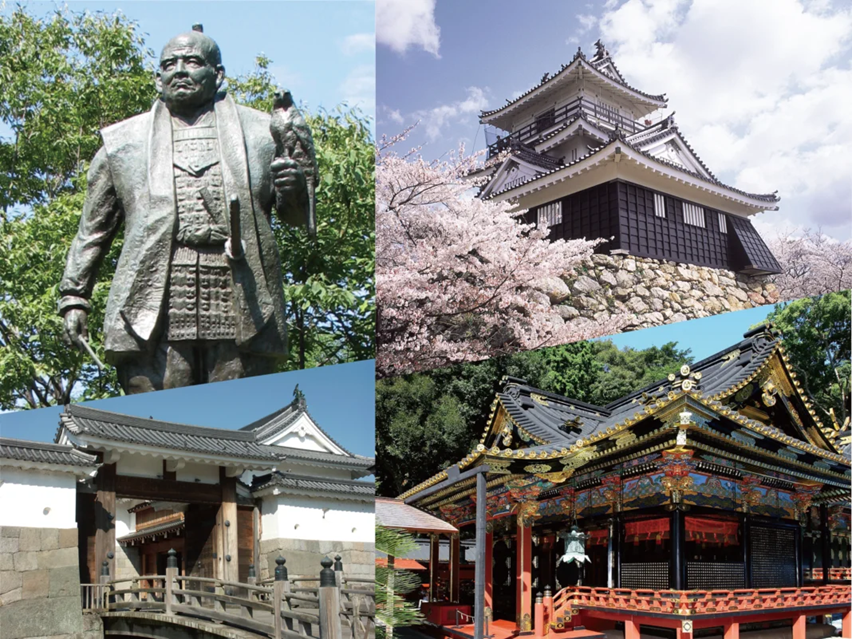Previously, we introduced the various sites associated with Shogun Tokugawa Ieyasu, where he spent his childhood and late middle age years. (Click here to read about his early childhood to late middle age).
Ieyasu, who rose to prominence in numerous battles, was later relocated to the Kanto region by order of Toyotomi Hideyoshi, but in his later years he returned to Sunpu as an “Ogosho” (retired shogun) and spent the rest of his life there, being buried at Mt. Kuno after his death. Shizuoka Prefecture is deeply connected to the life of Ieyasu, and there are many sites associated with him even today.
Here we will introduce “the Fujisan Hongu Sengen Taisha Shrine,” which is associated with the “Battle of Sekigahara,” Sunpu Castle, where Ieyasu spent the last years of his life, and Kunozan Toshogu Shrine, where his body is said to be buried, among other sites.
Old age – Becoming the ruler of the nation and achieving the rank of Seii Taishogun!
Ieyasu, who had made Suruga Province one of his territories with the decline of the Takeda clan, decided to move his residence from Hamamatsu Castle to Sunpu Castle and completed construction of the castle in 1589, but the following year he was transferred to the Kanto region by the order of Hideyoshi Toyotomi, the chief advisor to the Emperor.
However, after the death of Hideyoshi, he went on his way to become the ruler of Japan as the most powerful man in the country, and in 1600, he led his Eastern Army to victory over the Western Army under Ishida Mitsunari in the Battle of Sekigahara, a major battle that determined who would rule the land, and in 1603, at age 62, he was appointed as the Seii Taishogun (Commander-in-Chief of the Expeditionary Force Against the Barbarians), and established the Edo shogunate.
Fujisan Hongu Sengen Taisha Shrine (Fujinomiya City)
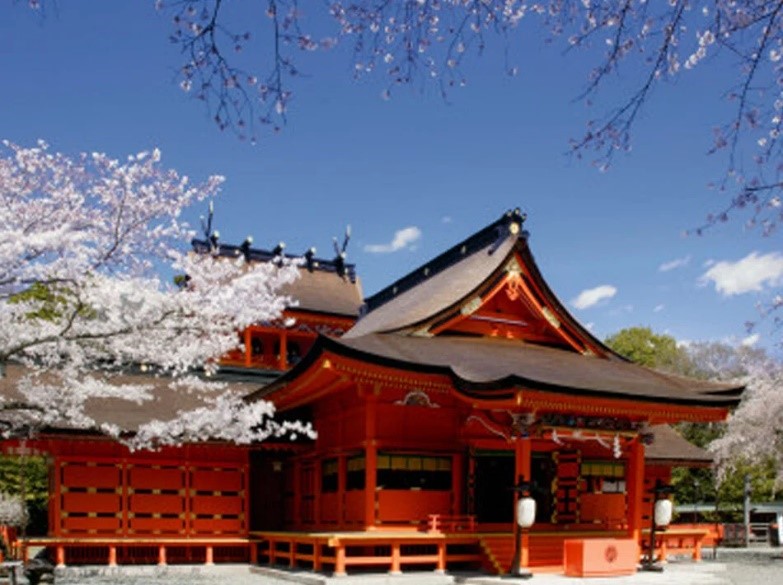
Fujisan Hongu Sengen Taisha Shrine is located in the center of Fujinomiya City, about a 10-minute walk from Fujinomiya Station on the JR Minobu Line.
It is the head shrine of more than 1,300 Sengen shrines in Japan and has been known since ancient times as the center of the Sengen faith, in which Mt. Fuji is the sacred deity, but Ieyasu is also closely associated with the fact that the land above the 8th station of Mt. Fuji belong to Fujisan Hongu Sengen Taisha Shrine.
In 1600, Ieyasu won the “Battle of Sekigahara” and in 1604, he built approximately 30 imperial buildings including the main shrine, worship hall, and tower gate of the Fujisan Hongu Sengen Taisha Shrine in return for his victory. Furthermore, in 1609, it was agreed that the money offered to the summit of Mt. Fuji (Okumiya Shrine) would be used to pay for the repair of the main building of the head shrine. This implies that Ieyasu recognized that the land at the summit of Mt. Fuji was part of the precincts of the head shrine.
Later, several shrines and temples claimed ownership of the summit of Mt. Fuji, causing controversy, but in 1779, the Edo shogunate officially recognized the land above the 8th station of Mt. Fuji as the grounds of the Fujisan Hongu Sengen Taisha Shrine. It is believed that Ieyasu’s former intentions played a major role in this decision.
Today, the main shrine building, the hall of offerings, the hall of worship, and the tower gate still exist, and the main shrine building is designated as a National Important Cultural Property. In addition, Wakutamaike Pond, which is a pond formed from underground water that gushes out from between the lava rocks of Mt. Fuji, has been designated as a National Special Natural Monument by the government and was selected as one of the “100 Excellent and Well-Conserved Waters in the Heisei Period”.
For more information, click here.
Later years – Return to Sunpu –
After Ieyasu was appointed Seii Taishogun, he handed over the position just two years later to his son Hidetada as the second shogun of the Tokugawa shogunate in 1605, and the following year he returned to live out his life at Sunpu Castle as an “Ogosho” (retired shogun).
Sunpu Castle Park (Shizuoka City)
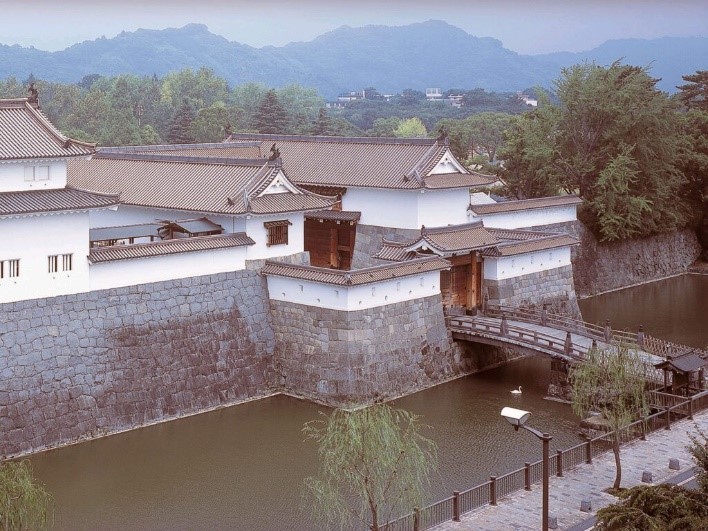
Sunpu Castle Park is located in the center of downtown Shizuoka, about a 15-minute walk from JR Shizuoka Station.
Upon entering Sunpu Castle, Ieyasu expanded and renovated the castle and initiated the town planning of Sunpu as well as a large-scale flood control project for the Abe River, which was the prototype for the current urban area of Shizuoka City. At that time, Sunpu, the political base for the Ogosho, surpassed Edo as the political, economic, and cultural center of the country.
Unfortunately, the castle tower was destroyed by a fire in 1635, but in 1989, the Tatsumi Yagura (turret) located southeast of Ninomaru was restored as part of the 100th anniversary of Shizuoka City, followed by the East Gate and the Hitsujisaru Yagura (wooden gate built at Sunpu Castle in the early 17th century), and today the area is known as “Sunpu Castle Park”, a popular place for local residents to enjoy a relaxing time. When excavation of the castle tower began in 2016, it was found to be unprecedentedly huge, measuring 68 m from north to south and 61 m from east to west, far surpassing the size of Edo Castle (45 m x 41 m).
For more information, click here.
Seikenji Temple (Shizuoka City)
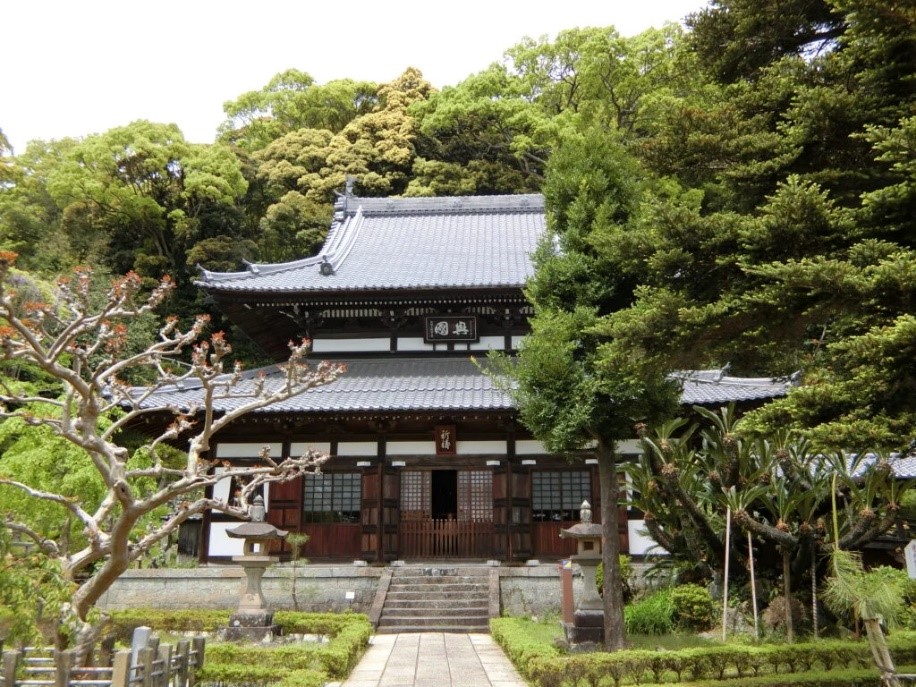
Seikenji Temple is located in Shimizu Ward, Shizuoka City, about a 15-minute walk from JR Okitsu Station, perched on a hill with a spectacular view of the Kiyomi-gata lagoon and Miho no Matsubara below.
It is said that the temple was constructed in the Nara period, and particularly during the Muromachi period, it was deeply revered by Ashikaga Takauji, and flourished as a “Zenkoku Jissetsu”, one of the ten important Rinzai temples in Japan. However, during the Warring States Period, the temple was frequently caught in the crossfire of war due to its location as a strategic transportation hub, and the precincts of the temple fell into disrepair. It is said that the temple was rebuilt by Zen Master Taigen Sessai (mentioned earlier), who educated Ieyasu during his childhood when he was a hostage of the Imagawa clan.
Ieyasu, who resided in Sunpu Castle, invited a delegation of 467 Korean envoys to Japan (the Korean emissaries) to Sunpu Castle in 1607 to restore diplomatic relations with the Joseon Dynasty, which had been severed by Toyotomi Hideyoshi’s invasion of Korea in the Bunroku-Keicho War (Japanese invasions of Korea), and designated Seikenji Temple as their quarters. The Korean emissaries made a total of 12 visits to Japan by 1811, during which Seikenji Temple became known as a symbol of the peaceful diplomacy promoted by Ieyasu as a place for cultural exchange between Japan and Korea.
Present-day Seikenji Temple still preserves many of the framed tablets and poems written by the Korean emissaries, and the “Documents on Joseon Tongsinsa/Chosen Tsushinshi,” which include 48 poems written by the envoys, are recognized as a valuable cultural asset worldwide, including being registered in UNESCO’s “Memory of the World” (formerly known as the Memory of the World Register). The garden at Seikenji Temple is designated as a National Site of Scenic Beauty, and there visitors can see the Japanese apricot tree named Garyubai, which is said to have been planted by Ieyasu himself.
For more information, click here.
After his death – Ieyasu becomes a god –
Ieyasu, who spent the last years of his life living at Sunpu Castle as an “Ogosho” and defeated the Toyotomi clan in the Winter and Summer Siege of Osaka between 1614 and 1615, passed away in 1616 at the age of 75 and was buried at Mt. Kuno by virtue of his last will and testament.
Kunozan Toshogu Shrine (Shizuoka City)
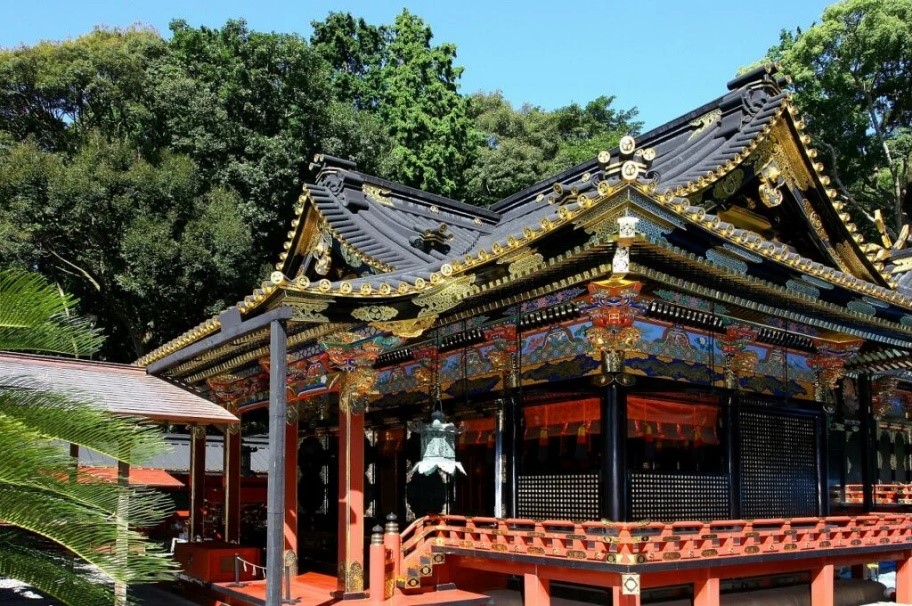
Kunozan Toshogu Shrine is located in Suruga Ward, Shizuoka City, near the summit of Mt. Kuno overlooking Suruga Bay, and to get there, visitors can either take the ropeway from the top of Nihondaira or climb the 1159 steps from the foothills of Mt. Kuno on the Suruga Bay side of the shrine.
The shrine was built in accordance with Ieyasu’s last will and testament, in which he stated, “Bury my body at Mt. Kuno in Suruga Province, hold a funeral at Zojoji Temple in Edo, and dedicate a memorial tablet at Daijuji Temple in Mikawa Provice, and after the first anniversary of my passing, build a small shrine on Mt. Nikko in Shimotsuke Province and enshrine my body there. Then, I will become a guardian to protect Kanhasshu (the eight provinces of Kanto region.”)
Ieyasu, who had put an end to the warring period after enduring many years of challenges and tribulations during his lifetime, laid the foundations for a peaceful era that lasted for more than 260 years, was bestowed the divine title of “Tosho Daigongen” by the Imperial Court and became the deity of the shrine, revered by the Imperial Court and shogunate as a deity of peace and a guardian of the nation.
Kunozan Toshogu Shrine was constructed by the best architectural techniques and arts of the time, and the richly colored, all-lacquered shrine building, based on a style known as “gongen-zukuri,” became the prototype for many other Toshogu shrines that were later built throughout Japan, including Nikko Toshogu Shrine.
In 2006, the shrine was repainted with lacquer to revive its ancient splendor, and in 2010, the main shrine building, Ishi-no-ma (stone hall), and worship hall were designated as national treasures as representative structures of the early Edo period.
For more information, click here.
**********
In his later years, Ieyasu became the supreme ruler of Japan, and after handing over the title of shogun to his son and second shogun, Hidetada, he was probably in a position to live wherever he wanted in Japan.
Why, then, did Ieyasu choose this site as his final home and burial place?
You could say it was because of its strategic significance as defensive base for the Kanto region, with the Abe River and Oi River to the west and the Fuji River and Hakone to the east, but as a citizen of Shizuoka Prefecture, I personally believe that Ieyasu, in his days of hardship and suffering, must have loved and missed the climate of this area where he spent his youth and the people who lived here, and he must have longed to return to this place someday.
We have visited some of the most famous sites in Shizuoka Prefecture that are associated with Ieyasu, his connection to the region runs deep, and there are many more sites that we have not been able to introduce here.
If you have a chance to visit these sites and experience tracing Ieyasu’s footsteps throughout his life, I am sure you will enjoy the history of Japan even more.
